Thinking about ditching paper in your office? It’s 2025, and going paperless isn’t just a trend—it’s a game-changer. Offices today are all about cutting costs, boosting productivity, and doing a little good for the planet. With the right software, you can say goodbye to clutter and hello to a more efficient workspace. Let’s dive into the world of paperless office software and see how it can transform your business.
Key Takeaways
- Switching to paperless office software can lead to significant cost savings by reducing paper and printing expenses.
- Digital workspaces enhance productivity by minimizing clutter and making information easily accessible.
- Adopting paperless solutions contributes to environmental conservation by reducing paper waste.
Why Paperless Office Software is the Future

The Environmental Perks of Going Digital
Going paperless isn’t just a trendy buzzword—it’s a genuine step towards saving the planet. Imagine reducing your office’s carbon footprint just by ditching paper. Every sheet of paper saved means fewer trees cut down and less waste in landfills. Plus, with less paper around, you’re not just helping the environment but also creating a cleaner, more organized workspace. It’s a win-win!
Cost Savings: More Than Just Paper
Sure, you save money on paper, but that’s just the tip of the iceberg. Think about all those sneaky costs that paper brings along: printing, storage, and even postage. By going digital, you cut those expenses significantly. Plus, digital files mean less need for physical storage space, which could save you a pretty penny in office rent. And let’s be real, who doesn’t love saving money?
Boosting Productivity with Less Clutter
A clutter-free desk can do wonders for your focus. With paperless office software, you can say goodbye to the chaos of paper stacks. Access any document in seconds, without the frantic search through piles of paper. This streamlined approach not only boosts productivity but also reduces stress. And let’s face it, less stress is always a good thing.
Embracing a paperless office isn’t just about technology—it’s about transforming how you work, making your environment more efficient and enjoyable. So why not take the plunge and explore future document management systems that lead the charge in creating a sustainable and productive workspace?
Choosing the Right Paperless Office Software

Features to Look For in 2025
Alright, so you’re ready to ditch the paper and dive into the digital world. But with so many options out there, how do you choose the right software? First off, speed is key. You want something that can search through massive digital files in seconds, not minutes. Look for software that offers seamless integration with your existing systems. Compatibility is your best friend here.
Another feature to keep an eye on is cloud storage. With cloud capabilities, you can access your files from anywhere—whether you’re at home, in the office, or sipping a latte at your favorite café. And don’t forget about collaboration tools. In 2025, it’s all about working together, even if you’re miles apart. Look for software that includes real-time editing and sharing features.
Top Contenders in the Market
Now, let’s talk about the big players. Google Workspace and Microsoft 365 Suite are still ruling the roost. They offer a comprehensive suite of tools that cover everything from document management to video conferencing. But they’re not the only fish in the sea. Notion and Asana are making waves with their project management capabilities. They might not be the traditional choice, but they offer unique features that could fit your needs perfectly.
For those who need a bit more customization, platforms like M-Files offer robust document management systems. These allow you to create a digital filing cabinet that reduces clutter while giving you secure access to your essential documents.
Customizing Software to Fit Your Needs
Once you’ve picked your software, it’s time to make it your own. Most platforms offer a degree of customization, so take advantage of that. Set up workflows that match your business processes. Create templates for repetitive tasks to save time. And don’t be afraid to tweak the settings. You want the software to work for you, not the other way around.
"Remember, the goal is to make your life easier, not more complicated. So, choose wisely and customize smartly."
Consider the support and training options available. A smooth transition means fewer headaches down the line. Make sure your team knows how to use the software effectively. After all, a tool is only as good as the hands that wield it.
Implementing Paperless Office Software: A Step-by-Step Guide
Preparing Your Team for the Transition
Alright, first things first. You can’t just toss a new system into the mix and expect everyone to magically know what to do. No, no, no. You’ve got to get your team ready for the big change. Communication is key here. Start by having a meeting to explain why you’re going paperless and how it’s going to make everyone’s life easier. Trust me, once they hear about fewer paper cuts and more coffee breaks, they’ll be on board.
Create a small task force or committee with representatives from different departments. These folks will be your paperless champions, helping to spread the good word and troubleshoot any hiccups. Encourage questions and feedback. After all, nobody likes surprises, right?
Integrating with Existing Systems
Now, let’s talk tech. Integrating new software with your current systems is like introducing a new puppy to your old cat. It might take a bit of time, but with patience, they’ll get along just fine. Identify which of your existing systems need to play nice with your new paperless software.
Make a checklist of all the software and tools you’re currently using. Then, work with your IT team to ensure compatibility. This might mean updating some systems or even letting go of outdated ones. Remember, it’s all about creating a seamless workflow.
Training and Support: Keeping It Smooth
Training is not just a one-time thing. It’s more like teaching your grandma to use Instagram; it requires patience and ongoing support. Schedule training sessions for your team and make sure they’re hands-on. People learn best by doing, not just by watching a PowerPoint presentation.
Set up a support system for when things go awry. Designate a few tech-savvy team members as go-to support staff. And don’t forget to celebrate small wins. Every time someone successfully sends a digital document instead of printing it, it’s a step towards a greener office.
Transitioning to a paperless office is a journey, not a sprint. Embrace the process, celebrate the milestones, and remember: every paper saved is a tree hug earned. 🌳
By taking these steps, you’ll not only ease the transition but also implement a paperless office that boosts efficiency and morale. Who knew saving trees could be so rewarding?
Overcoming Challenges in a Paperless Office
Addressing Security Concerns
Ah, security—the digital boogeyman of the modern age. Going paperless can feel like opening a can of worms when it comes to keeping your data safe. But fear not! Digital documents can actually be more secure than their paper counterparts. Think about it: Would you rather have sensitive information locked behind a password or sitting in a filing cabinet that anyone could open? Embrace encryption and multi-factor authentication like a digital ninja. Regularly update your security protocols, and make sure your team is in the loop. They should know the difference between a phishing email and a real one—trust me, it’s crucial.
Ensuring Compliance with Regulations
Regulations, regulations, regulations. They’re like the traffic cops of the business world—necessary, but sometimes a bit of a nuisance. When you switch to a paperless office, keeping up with compliance can feel like a juggling act. Different industries have different rules, and missing a step can lead to a regulatory smackdown. Keep a checklist handy and maybe even hire a compliance officer if things get too overwhelming. Regular audits can help you stay on track, and remember: consistency is key. If you get into a routine, keeping up with compliance will be as easy as pie.
Dealing with Technological Hiccups
Technology is great—until it isn’t. We’ve all been there: the software crashes right before a big presentation, or the scanner decides it’s on strike. When you go paperless, you’re bound to hit a few bumps in the road. The key is to have a plan. Keep a tech support contact on speed dial and consider investing in a solid IT team if you’re big enough. Regular training sessions can turn your team into tech-savvy superheroes, ready to tackle any glitch that comes their way. And remember, every hiccup is just a learning opportunity in disguise.
"Transitioning to a paperless office presents challenges such as ensuring document security, managing version control, integrating technology, overcoming resistance to change, and facing high initial setup costs." Transitioning to a paperless office
Going paperless isn’t just about saving trees—it’s about streamlining operations and hopping on the efficiency train. Sure, there’ll be challenges, but with a bit of foresight and a sprinkle of humor, you’ll be laughing all the way to the digital bank. 🏦
Conclusion
Alright, folks, we’ve reached the end of our paperless journey. Who knew ditching paper could be so liberating? It’s like finding out you can have your cake and eat it too, without the crumbs. By now, you’re probably dreaming of an office where paper jams are a thing of the past, and the only thing cluttering your desk is your collection of quirky coffee mugs. Going paperless isn’t just a trend; it’s the future knocking on your door, asking if it can come in and tidy up a bit. So, why not open the door? Embrace the digital age, save a tree or two, and watch your productivity soar. Remember, the only thing you should be printing is your vacation photos. Cheers to a clutter-free, efficient workspace!
Frequently Asked Questions
What is paperless office software?
Paperless office software helps businesses manage documents digitally, reducing the need for physical paper. It includes tools for storing, organizing, and sharing digital files.
Why should my business go paperless?
Going paperless can save money on paper and printing costs, improve efficiency by making documents easier to find, and help the environment by reducing paper waste.
Is it hard to switch to a paperless office?
Switching to a paperless office can take some time and effort, but with the right tools and training, it can be a smooth transition. Many businesses find the benefits outweigh the initial challenges.







